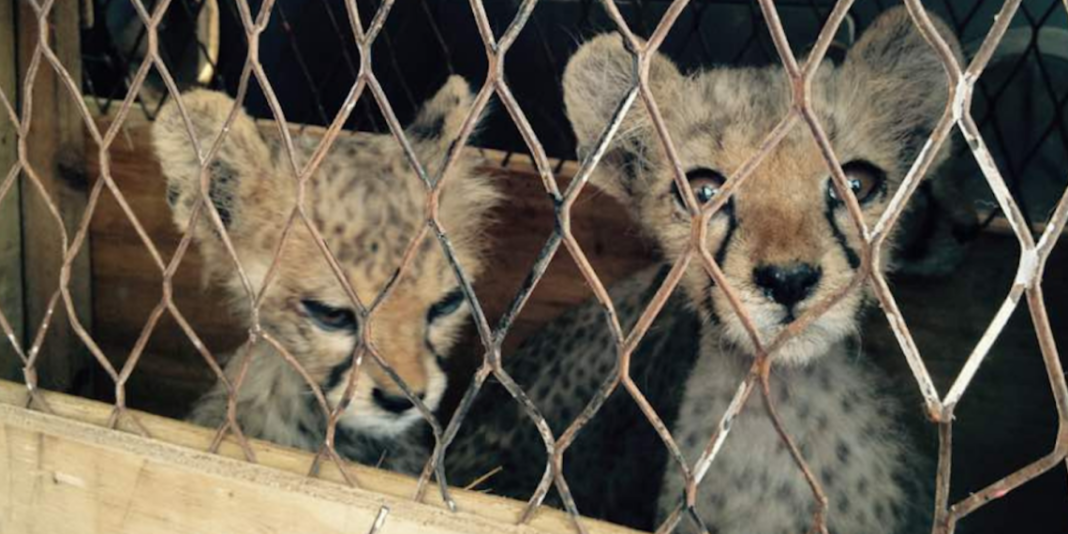Cheetah trafficking from the Horn of Africa to the Arabian Peninsula has reached alarming levels, threatening the survival of one of the world’s most iconic predators. According to the Cheetah Conservation Fund (CCF), approximately 300 cheetah cubs are illegally captured each year in Ethiopia, northern Kenya, Somalia, and Somaliland, destined for illegal sale as exotic pets in wealthy Gulf nations.
The Scale of the Crisis
Between 2010 and 2019, researchers documented over 1,884 incidents involving 4,000 live cheetahs or cheetah parts linked to the illegal wildlife trade. Since 2020, the situation has worsened, with trade levels rising 60% higher than the previous decade.
Currently, only about 2,290 cheetahs remain in the wild across the Horn of Africa. These animals are classified as vulnerable by both the Convention on International Trade in Endangered Species (CITES) and the International Union for Conservation of Nature (IUCN), with international trade in wild-caught cheetahs strictly prohibited—except for a few regulated exceptions in Botswana, Namibia, and Zimbabwe.


Smuggling Routes and Methods
Despite legal protections, cheetah cubs are routinely trafficked across porous East African borders. In Somalia, baby cheetahs can be sold for as little as $78, often by farmers retaliating against cheetahs for preying on livestock.
Criminal syndicates exploit weak law enforcement, local poverty, and regional instability to move the animals. Cubs are transported via motorcycles to Somalia and then shipped to countries like Kuwait, Qatar, Saudi Arabia, the United Arab Emirates (UAE), and Yemen, where a single cub can sell for up to KES3.8 million (nearly $30,000).
“Many of these cubs die before reaching their destination due to poor care and harsh conditions,” says Vincent van der Merwe of the Cheetah Metapopulation Initiative.
The Role of Social Media and Corruption
A 2024 report by TRAFFIC, a non-governmental organisation focused on sustainable wildlife trade, revealed that 70% of cheetah trafficking now happens online, mainly through social media platforms and e-commerce sites.
Somaliland, due to its proximity to the Arabian Peninsula, has emerged as a key trafficking hub. Corruption, poverty, and lack of environmental regulation make enforcement difficult. In 2024, The East African highlighted how corrupt border officials across Kenya, Ethiopia, and Somalia are complicit in enabling the illegal trade.
What’s Being Done—and What Still Needs to Be
Efforts to combat this crisis include the Horn of Africa Wildlife Enforcement Network, founded in 2017 by members of the Intergovernmental Authority on Development (IGAD). Some Gulf countries, like the UAE, have banned private cheetah ownership since 2016, but enforcement remains weak.


Experts say tackling the problem requires a holistic, cross-border strategy:
- Community engagement: Offering sustainable income sources and involving locals in conservation can reduce trafficking incentives.
- Improved enforcement: Better training, fair wages for wildlife rangers, and the use of technology (e.g., drones) to monitor hotspots can strengthen protection efforts.
- Demand reduction: Campaigns targeting wealthy buyers in the Middle East must emphasize the ethical and ecological costs of owning cheetahs.
- Tech accountability: Social media and e-commerce companies should work with governments to detect and remove wildlife trafficking listings.

A Call for Stronger Regional Collaboration
Conservationists Laurie Marker and Shira Yashphe of the CCF stress the need for regional protocols and tougher laws across East Africa and the Gulf states. They urge IGAD and national governments to launch joint initiatives and tighten regulations to combat this growing threat.
Ultimately, curbing cheetah trafficking will require a united front—blending law enforcement, public awareness, and economic alternatives to safeguard one of Africa’s most endangered predators.




